Pixel 6 Pro vs. Galaxy S21 Ultra: Which phone is best?
The Pixel 6 Pro and Galaxy S21 Ultra are two of the best phones on the market, and our guide will help you find the best for you!
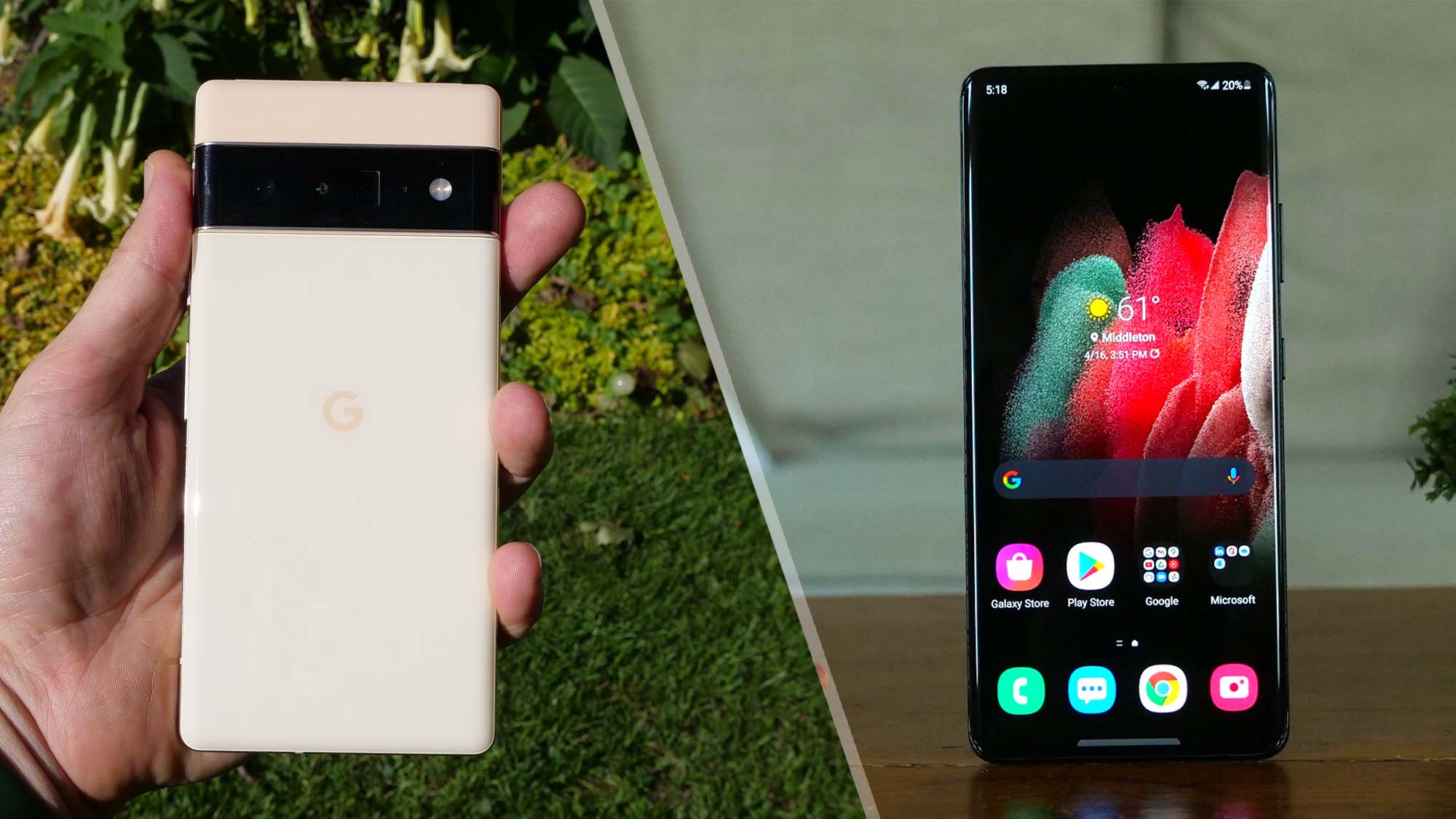
The Pixel 6 Pro finally brings Google back into the flagship discussion, but Samsung’s Galaxy S21 Ultra is arguably the pinnacle of Android hardware today. So is the Pixel 6 Pro enough to challenge it?
The Pixel 6 Pro is a generational leap for Google hardware, which is particularly shocking coming from the decidedly mid-range Pixel 5 last year. From the outside, it seems sudden, but Google spent years on research and development to get to the release of the Pixel 6 Pro. The results show; the hardware design, the Tensor chip, the new camera array and refined software make last year’s Pixels look years older.
For its part, the Galaxy S21 Ultra wasn’t a transformative update from the Galaxy S20, but it didn’t need to be. Samsung already offered some of the best hardware; it achieved that again this year while adding a unique design and improving its software support.
Last year, the Pixel could not begin to hold up to the best that Samsung had to offer, but this year, the Pixel 6 Pro and Galaxy S21 Ultra are both among the best smartphones and an intriguing face-off to consider if you are in the market for a flagship phone.
- Best smartphones in 2021
- Best budget phones in 2021
- Best mobile phone deals in November 2021
Best Black Friday 2021 deals
Black Friday 2021 falls on November 26 and we expect to see tons of excellent deals on today’s most coveted tech. Be sure to bookmark our Black Friday 2021 deals hub for the best holiday discounts.
Pixel 6 Pro vs. Galaxy S21 Ultra : price and value
The Pixel 6 Pro starts at $899 for a 128GB model with 12GB of RAM. Upgrading to 256GB or 512GB of storage will cost you $999 and $1,099, respectively.
The Galaxy S21 Ultra starts at $1,199 for the same 128GB and 12GB of RAM as you get with the base Pixel 6 Pro. Upgrading to 256GB is just $50, and jumping to the top-of-the-line 512GB model takes you to $1,379 and bumps the RAM up to 16GB.
Sign up to receive The Snapshot, a free special dispatch from Laptop Mag, in your inbox.
It’s worth noting that while these are the full retail prices for the phone, the Galaxy S21 Ultra is now frequently discounted. You should expect to pay somewhere between $1,000 to $1,050 for the base model. We’ve seen some Pixel 6 Pro deals already, but they are far less common as the phone has only been available for a month at the time of writing.
Even factoring in the Galaxy S21 Ultra’s discounted price, the Pixel 6 Pro wins this round. The Galaxy S21 Ultra certainly has some hardware advantages that may change the equation for you, but the Pixel 6 Pro is the better value for most people.
Winner: Pixel 6 Pro

Pixel 6 Pro vs. Galaxy S21 Ultra: design
Google finally found a standout design with the Pixel 6 Pro. The full-width camera array on the back of the phone is a bit polarizing, but it creates a distinct Pixel look that is immediately recognizable. This year, Samsung managed a similar trick with the Galaxy S21 Ultra; the Contour Cut Camera housing that wraps from the phone’s edge across the back offers a profile others are just starting to replicate.
From a pure utility standpoint, I prefer the Pixel 6 Pro design as it allows you to lay the phone on a desk or table even if you are going caseless by avoiding the camera array wobble that virtually every modern phone falls victim to. However, in the name of protecting your nearly $1,000 mostly glass device, you are likely going to turn to a case, and that negates some of the design benefits. The Pixel 6 Pro does come out slightly ahead there as well though as its camera array is substantial enough that it remains recognizable in a case.
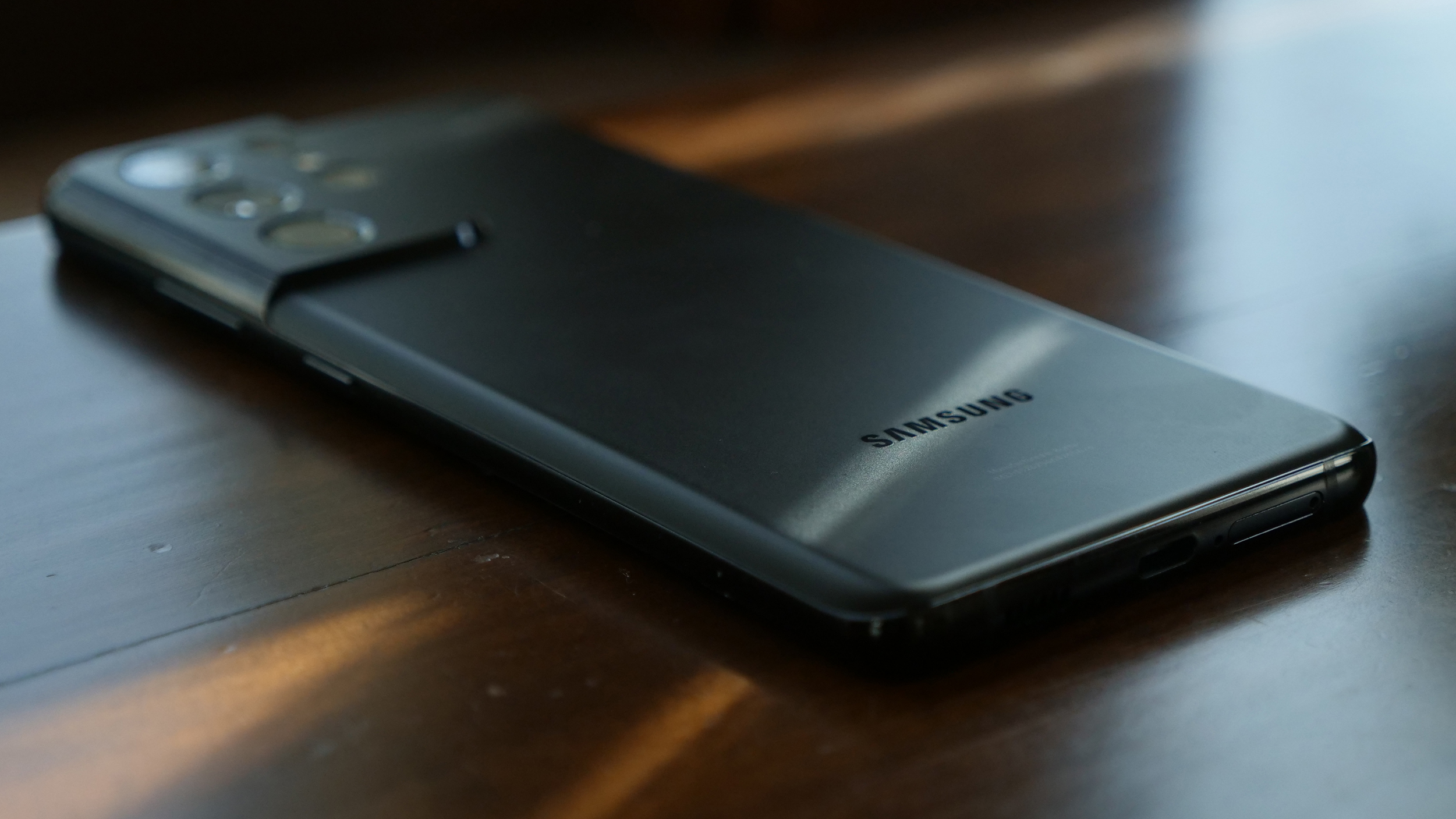
Looking at the durability of each phone, they are on equal footing with IP68 water and dust resistance and comparable screen protection. Both use Gorilla Glass Victus on the front and back of the phone. Gorilla Glass Victus offers you protection from the typical bumps and minor drops you might encounter, but fancy names aside, the glass will still break if it takes a significant fall or hit.
Neither of these phones will disappear into your pocket, but you know that when you are buying a phone with a 6.7-inch or 6.8-inch screen (unless you get the Galaxy Z Flip 3). Despite its slightly smaller display, the Pixel 6 Pro matches the Galaxy S21 Ultra’s dimensions exactly at 6.5 x 3.0 x.035 inches. It is noticeably lighter at 7.4 ounces to the Galaxy S21 Ultra’s 8.1 ounces.
There’s no clear winner here as the objective measurements for these phones are all virtually identical. Along with the iPhone 13, these are two of the best phone designs that we’ve seen in years. They manage to be distinct and as easy to hold and use as is possible at this size.
Winner: Draw
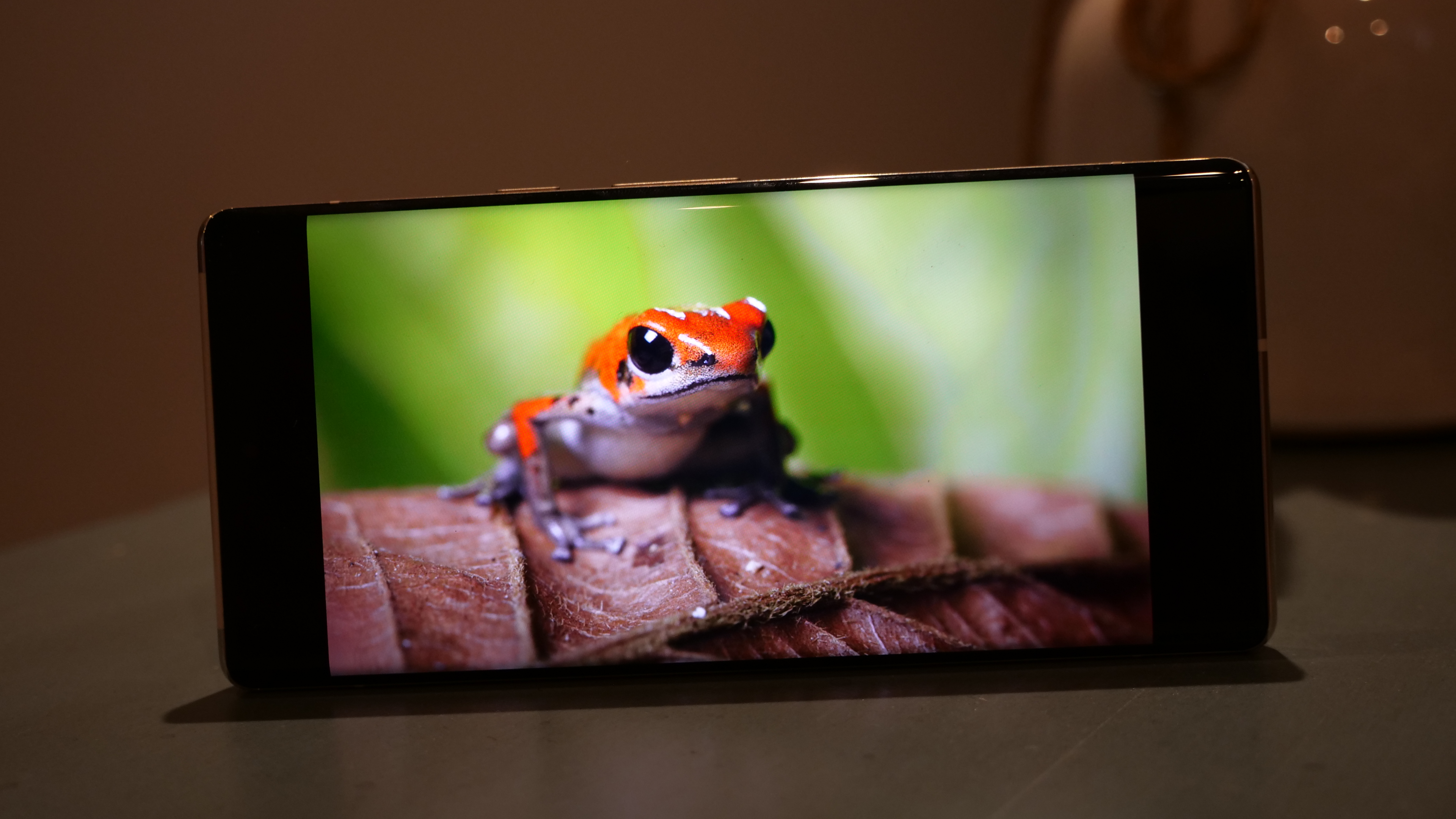
Pixel 6 Pro vs. Galaxy S21 Ultra: display
The Pixel 6 Pro uses Samsung’s display tech against it with a 6.7-inch, QHD+ (3120x1440 pixel) LTPO OLED display with Google’s Smooth Display introducing adaptive 120Hz refresh rate to a Pixel for the first time. The Galaxy S21 Ultra nearly matches it with a 6.8-inch, WQHD+ (3200x1440 pixel) LTPO Dynamic AMOLED 2X display.
That means both displays offer the ability to scale the refresh rate from 10Hz up to 120Hz depending on the content on the screen. At the high end, this gives you buttery smooth animations through the operating system and supported apps, and at the low end, it should deliver improved battery life when viewing static content.
The two displays are virtually indistinguishable when it comes to sharpness. The Galaxy S21 Ultra delivers an impressive 515 pixels per inch (PPI) and the Pixel 6 Pro nips at its heels at 512 PPI. That is a point in the Galaxy S21 Ultra’s favor given its taller screen, but if you can see the pixels on either of these phones, you are way too close to your phone.
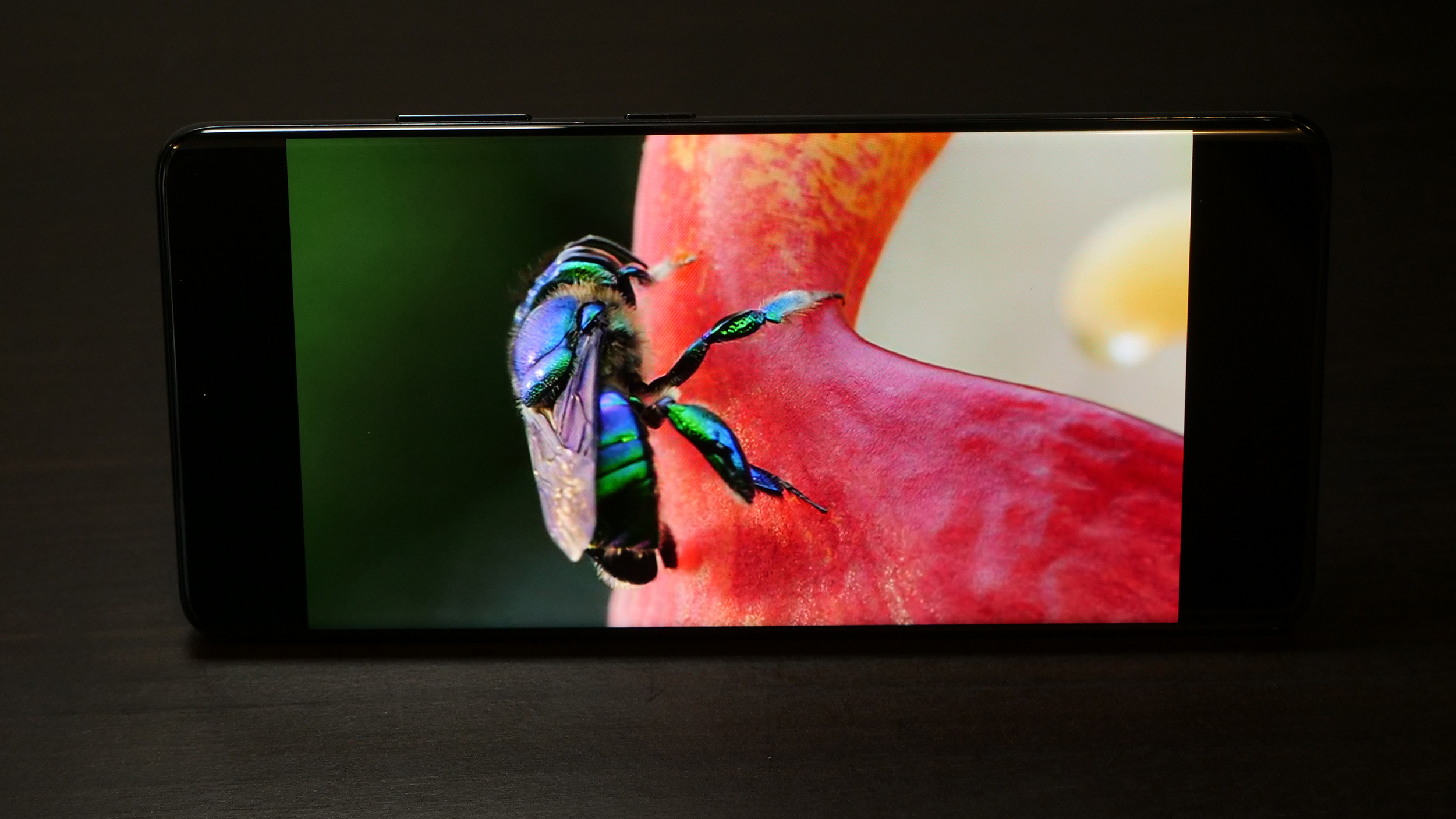
I’ve spent considerable time watching content on both of these phones. As always, I turn to Our Planet and Life in Color with David Attenborough for some gorgeous HDR visuals to show off their full capabilities. My eyes can’t pick out a winner between the two. If you use the boosted or vivid color modes on either phone, you get an image that some may consider too saturated, but it looks great, and you can tone it down with the natural display option if you prefer. The color reproduction is solid, with none of the slight tonal shifts that I’ve experienced with the iPhone 13 Pro.
Letting our colorimeter results weigh in with some data to support my eyes, the Pixel 6 Pro covers 74% of the DCI-P3 color gamut in its Natural color setting, which is behind the Galaxy S21 Ultra’s 81.4%. Again, if you want the most vibrant look, you can push these displays to roughly 130 to 140% of the DCI-P3 color gamut, but that’s a matter of personal preference.
Brightness is more cut and dry; the Pixel 6 Pro delivers a formidable 842 nits, just edging out the Galaxy S21 Ultra with 821 nits. Both are behind the iPhone 13 Pro’s preposterous 1,024 nits, but we’re well into the realm of irrelevance as any of these displays are perfectly visible even in the brightest sunlit environment.
Overall, this category is a draw. If the screen size is the most important thing to you, then the Galaxy S21 Ultra takes it by a hair, but these displays are otherwise too similar to crown a victor.
Winner: Draw
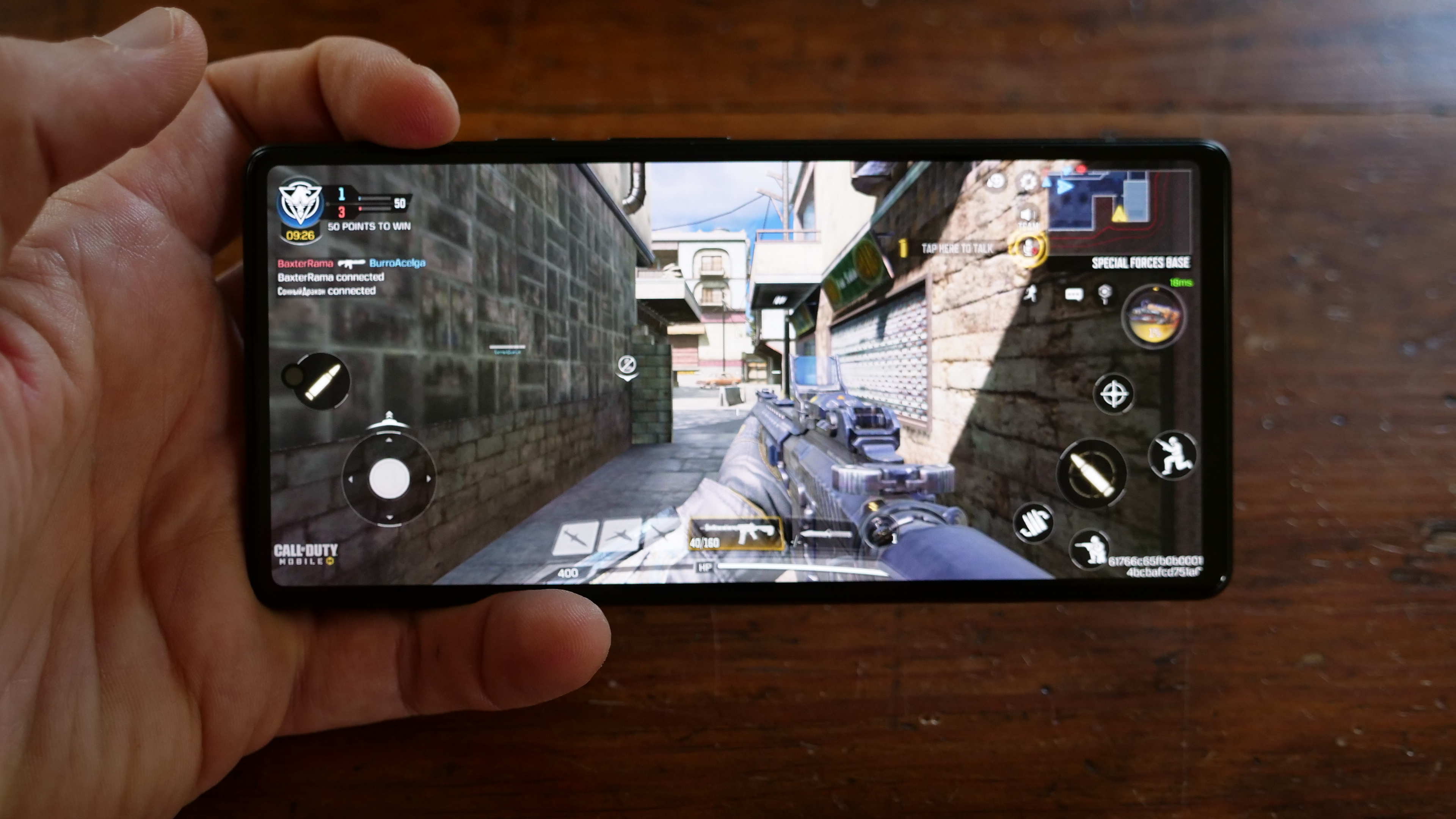
Pixel 6 Pro vs. Galaxy S21 Ultra: performance
Google is taking on Qualcomm this year with its custom Tensor chip and it offers some unique advantages and long-term benefits. Still, the Snapdragon 888 powering the Galaxy S21 Ultra remains a strong option.
In day-to-day usage, this isn’t going to be a noticeable difference for most people. We loaded dozens of Google Chrome tabs, apps, picture-in-picture videos, and games in our review of each phone, and neither skipped a frame. Unlike last year’s Pixel lineup, I could fire up intensive games like Call of Duty Mobile on the Pixel 6 Pro, and even at its high settings, it played perfectly. Naturally, this was true for the Galaxy S21 Ultra, and when you look at the benchmarks, you get a better idea of the extra CPU headroom that the Galaxy S21 Ultra has over the Pixel 6 Pro.
On the Geekbench 5 overall performance test, the Pixel 6 Pro managed a score of 2,760. That’s well behind the Galaxy S21 Ultra’s 3,440, which isn’t even the fastest Android phone. While this is a largely meaningless difference for most people, it’s reasonable to assume that the Pixel 6 Pro processor will start showing its age sooner than the Galaxy S21 Ultra. Google may combat that as it can design with its chipset in mind, but the raw power difference is too much to ignore completely.

Our graphics-focused testing was a different story, with the Pixel 6 Pro delivering 40 frames per second, which manages to outclass the Galaxy S21 Ultra (34 fps). We are still in the early days with Google’s Tensor chip, but it seems that Google leaned into gaming and graphics performance more than we would have anticipated, which carries over to other tasks.
The Adobe Premiere Rush video editing test showed this off again with the Pixel 6 Pro finishing rendering and exporting a 4K video to 1080p in 48 seconds. That’s about 24% faster than the Galaxy S21 Ultra’s 1 minute and 3-second finish.
Neither phone will present any issues for users in terms of churning through typical daily tasks or virtually any Android app that you can throw at them today, and ultimately, this is too close to call. The biggest argument favoring the Snapdragon 888 is Qualcomm’s proven track record versus the new Tensor chip.
Winner: Draw
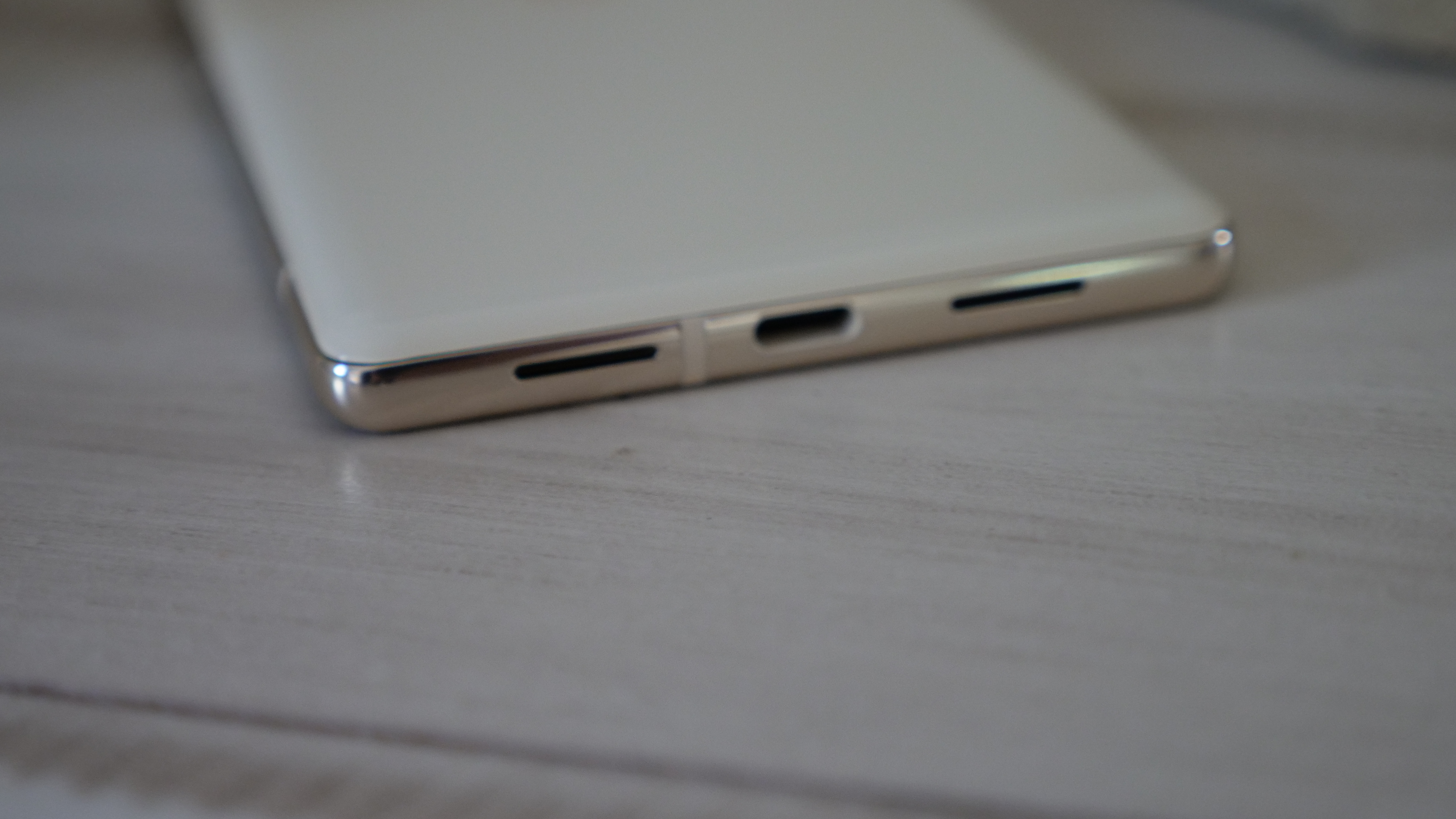
Pixel 6 Pro vs. Galaxy S21 Ultra: battery life and charging
Battery life is another area where the two phones are nearly identical from a hardware standpoint with 5,000mAh batteries in each. But things get a little more complicated in reality.
My experience with the Pixel 6 Pro battery life has been very positive; however, that hasn’t been the case for everyone, with Pixel 6 Pro battery life reports ranging considerably. Some find them to be well short of the competition.
Our own Laptop Mag Battery test produced a terrible result for the Pixel 6 Pro at 7 hours and 43 minutes, and while that didn’t align with our real-world testing, it’s worth noting. You can check out the report for a complete picture; the consensus is positive, but there are some notable exceptions. With all that in mind, the Galaxy S21 Ultra is the clear winner when it comes to battery life, with 10 hours and 7 minutes in our official test and solid results in our real-world testing as well.
In my experience, neither phone will present a problem getting through a full day of usage, but it’s certainly less of a settled matter with the Pixel 6 Pro, and we’re continuing to test and track others' reporting of it as well.

Turning to charging, it recently was revealed that while Google released a 30W fast charger with the Pixel 6 Pro, the phone can only draw 23W, putting it slightly behind the 25W charging for the Galaxy S21 Ultra. In our testing, the Galaxy S21 Ultra delivered on that promise, reaching 31% in 15 minutes and 56% in 30 minutes, while the Pixel 6 Pro only made it to 50% in 30 minutes. It’s not a significant difference, but disappointing as it seemed Google was finally taking a decent leap forward with Pixel 6 Pro charging. Neither, of course, includes a charger in the box, so you’ll need to pick up a fast charger if you don’t have one.
Support for wireless Qi charging is also present on both phones, which is a convenience that I’d have a hard time living without.
Overall, this category goes to the Galaxy S21 Ultra; it delivers unquestioned solid battery life and slightly faster charging.

Pixel 6 Pro vs. Galaxy S21 Ultra: cameras
Google may not want you to call it a comeback; the Pixels have been contenders in mobile photography for years, but there’s no question that it lost ground last year with the iPhone and even Samsung overtaking them in some situations. The Pixel 5 didn’t take bad photos by any means, but it couldn’t keep up with the best of the best.
The Pixel 6 Pro changes all of that with a new wide-angle primary 50MP Octa PD Quad Bayer sensor with an f/1.85 aperture and a 1.2µm pixel width. That new sensor is 1/1.31”, one of the largest currently available in a phone. The 12MP ultra-wide is improved with a larger 1.25µm pixel width, f/2.2 aperture, and a wider 114-degree field of view. The new telephoto is almost as significant an update as the primary with a 48MP resolution and a 4x optical zoom that can deliver usable results even at its full 20x digital zoom. For years now, the Pixel camera has done more with less when it comes to output versus hardware; it is at last on relatively equal footing with the competition.
Unless that competition is the Galaxy S21 Ultra. Samsung packed this phone with a 108MP wide-angle primary lens at a fast f/1.8 assisted by laser autofocus. Add in a 12MP ultra-wide lens at f/2.2, a 10MP 3x telephoto at f/2.4, and a 10MP, 10x telephoto at f/4.9, and it’s easy to see how this is the most versatile camera phone hardware on the market.
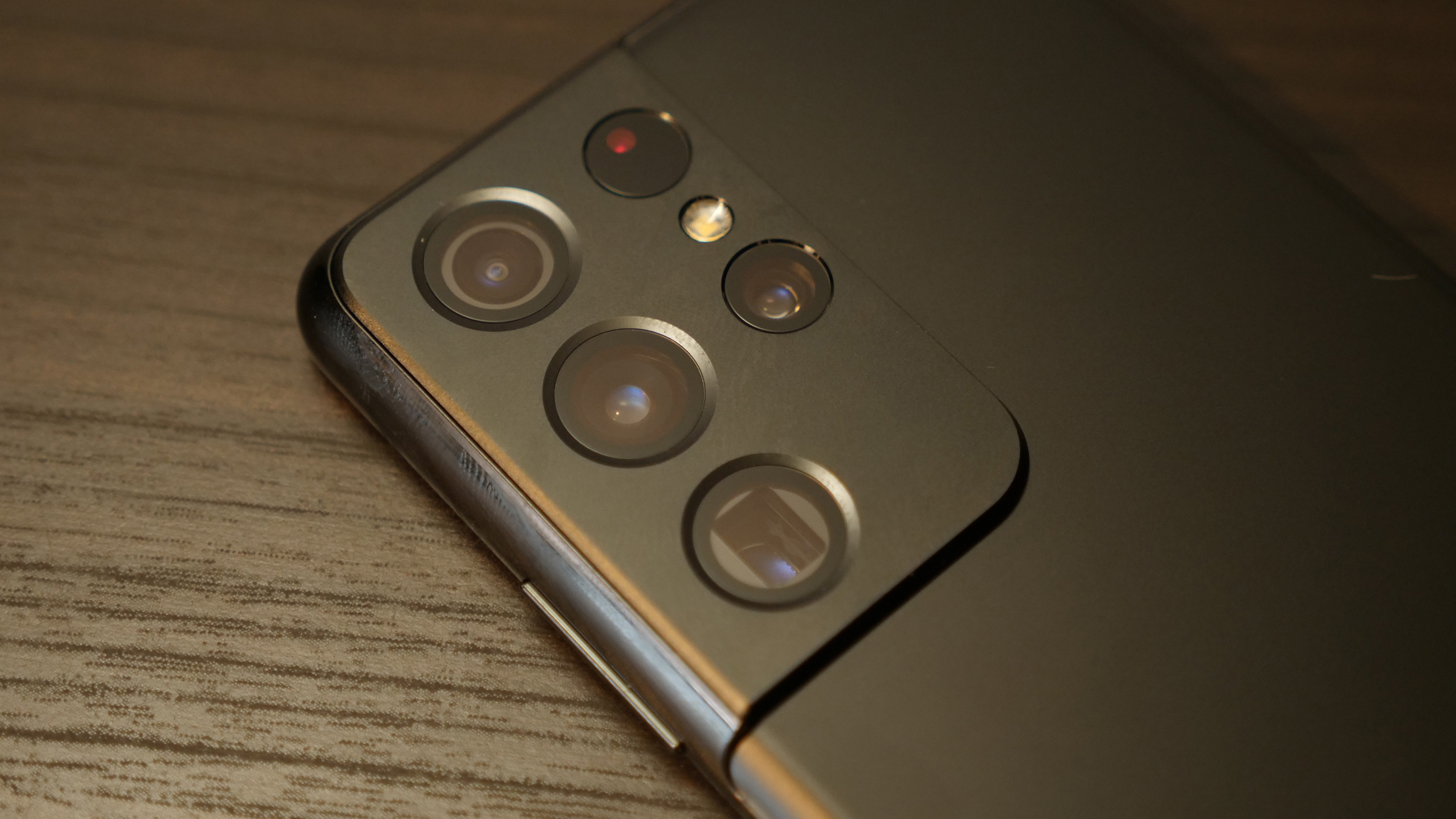
Samsung’s hardware retains an edge in most regards. It unquestionably offers superior telephoto lenses, but it’s closer than it has ever been, and Google’s computational photography prowess is enough to close that gap.
Here’s a look at some samples from all three lenses on the Pixel 6 Pro. The images are sharp, but there’s pop to the color from the Pixel 6 Pro camera. Whether it’s a skyline or the bright white feathers of our chicken, the Galaxy S21 Ultra comes up just shy of delivering. The depth of color is excellent without pushing too far into the hyperreal look you get with some other cameras’ heavy HDR.

Pixel 6 Pro camera samples

Pixel 6 Pro camera samples

Pixel 6 Pro camera samples

Pixel 6 Pro camera samples

Pixel 6 Pro camera samples

Pixel 6 Pro camera samples

Pixel 6 Pro camera samples

Pixel 6 Pro camera samples

Pixel 6 Pro camera samples

Pixel 6 Pro camera samples

Pixel 6 Pro camera samples
Here are some shots from the Galaxy S21 Ultra. They aren’t bad at all, but I do think they sacrifice some of the real-life looks of the Pixel 6 Pro shots in favor of a more saturated image. If you prefer that look, then by all means, opt for the Galaxy S21 Ultra. It is capable of producing some beautiful shots, but for me, it’s not quite capturing the scene as I see it.

Samsung Galaxy S21 Ultra camera samples

Samsung Galaxy S21 Ultra camera samples

Samsung Galaxy S21 Ultra camera samples

Samsung Galaxy S21 Ultra camera samples

Samsung Galaxy S21 Ultra camera samples

Samsung Galaxy S21 Ultra camera samples

Samsung Galaxy S21 Ultra camera samples
Turning to night shots, the Pixel 6 Pro gains a significant advantage, though the iPhone 13 Pro has a leg up on both of these phones with its incredible aperture. Still, Google’s night mode remains unchallenged in nearly converting night into day. And in the astrophotography world, the Galaxy S21 Ultra gets a rare win against the Pixel 6 Pro if you want a snapshot of the moon, but full shots of the starry sky are where Google reigns supreme.
Google finally brought back a telephoto sensor this year, and the reach is impressive. With a steady hand, you can pull off a usable 10-12x zoom shot, and on a tripod, a full 20x zoom can work. Against almost any other competitor, this would be a win for the Pixel 6 Pro, but Samsung’s telephoto is unmatched. If you like taking photos of wildlife or want to take pictures of your kids without having to hover right next to them, the Galaxy S21 Ultra is the best option by a wide margin. Even handheld, you can get usable 30x zoom shots, and if you want to get ridiculous with it, the 100x zoom shots are blurry but not something anyone else can match.

While the Galaxy S21 Ultra has the superior selfie sensor with 40MP at f/2.2, the Pixel 6 Pro’s 11.1MP at f/2.2 delivers excellent results. Samsung is guilty of over smoothing which gives skin an unnatural look, and it can’t quite match Google’s edge detection in portrait mode, meaning you get the occasional misfire with the bokeh.

Samsung Galaxy S21 Ultra front-facing camera portrait mode

Pixel 6 Pro camera sample front-facing camera
One Pixel 6 Pro photo feature that I can’t forget to bring up is Magic Eraser. It allows you to remove objects or people from a photo by simply tapping on them. It works best if you have a somewhat consistent background, and the results aren’t always going to hold up to pinch to zoom scrutiny, but for just sharing online, they are fantastic. You can vanish a beach or a theme park full of people in the background in seconds, it’s a remarkable tool.
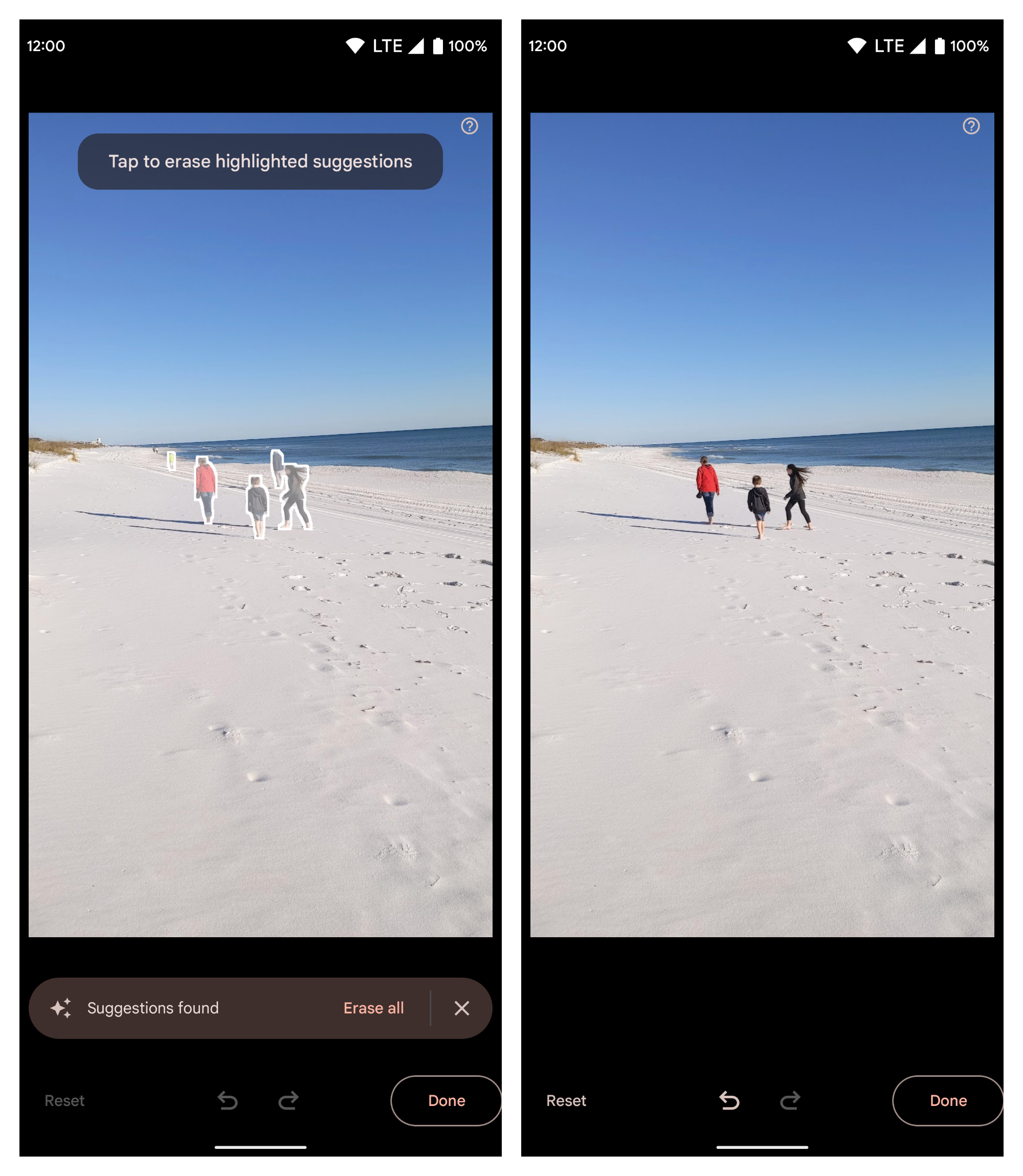
Returning to a strength for Samsung, the Galaxy S21 Ultra eclipses the Pixel 6 Pro when it comes to video capture. Leaving aside the preposterous 8K video at up to 30fps, the 4K at up to 60fps looks crisper than the results from the Pixel 6 Pro and offers more robust recording options, including the Director’s View which allows you to record simultaneously from the front and rear cameras.
Overall, this category goes to the Pixel 6 Pro as I believe that the results from the wide-angle, ultra-wide and even short telephoto (3-5x) shots are superior from the Pixel 6 Pro. However, if you value actual telephoto (10x and beyond) or take a lot of video with your phone, the Galaxy S21 Ultra is likely the better choice for you.
Winner: Pixel 6 Pro
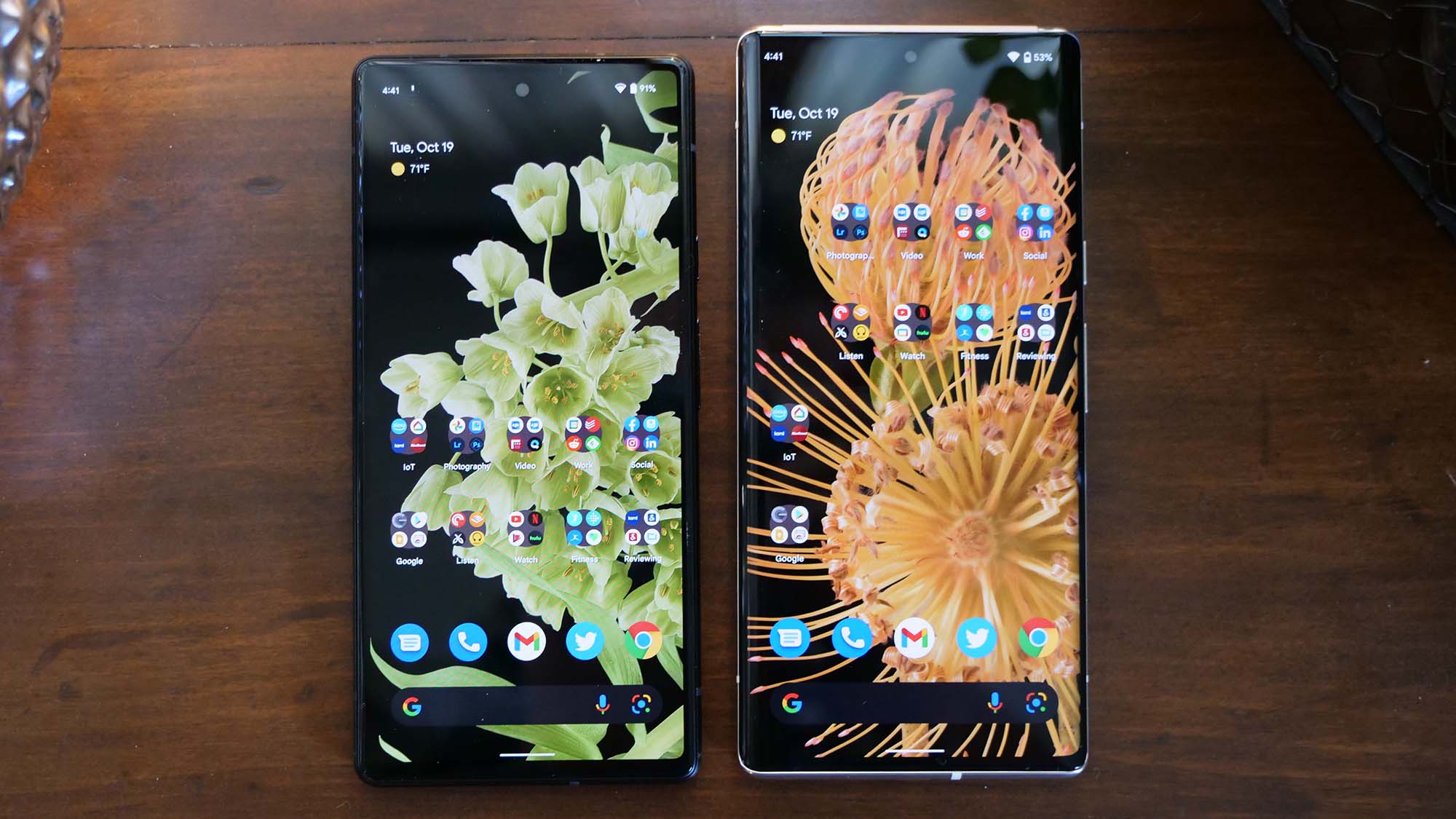
Pixel 6 Pro vs. Galaxy S21 Ultra: software
Google and Samsung are unquestionably the top Android manufacturers when it comes to software updates. Google’s Pixel 6 Pro offers three years of major OS updates and five years of security updates, while the Galaxy S21 Ultra gets the same three years of OS updates, but four years of security updates.
If you read our review of Android 12, then you’ll know that the operating system just got a dramatic visual refresh, including the new notification panel, privacy updates and some other handy additions like universal search. The Pixel gets some nice extras like Hold for Me, which will tell you when a real person comes back on an automated call and dramatically improved dictation that is assisted by the new Tensor chip. Camera features like Magic Eraser and Real Tone are potential game-changers as well.

The Galaxy S21 Ultra is one of the first non-Pixel phones to get Android 12 and while One UI 4 does make some departures from the Pixel’s version, the same underlying updates are all there. Most of the changes amount to window dressing with slightly different animations. Samsung’s keyboard adds new emojis, widgets that are similar to the Material You look, but don’t follow the color palette shift that is possible with the entire operating system in Android 12 on the Pixel.
While the Pixel 6 Pro has a slight advantage on the software support side with five years of security updates versus four years, it’s close enough that the One UI vs. Pixel skin over Android is the bigger deciding factor for most people. Each offers its own benefits, with Samsung leaning into more power-user features like DeX that can turn your phone into a laptop replacement along with S Pen support. The Pixel’s entire marketing campaign focuses on its AI advantages in trying to let the phone make more intelligent decisions about what you want to do with it and surfacing information or apps you need at the right moment.
It’s close, but overall this category goes to the Pixel 6 Pro. It offers faster updates, unique Pixel software features, longer security support, and overall the Pixel version of Android delivers benefits that are more applicable to the average user.
Winner: Pixel 6 Pro
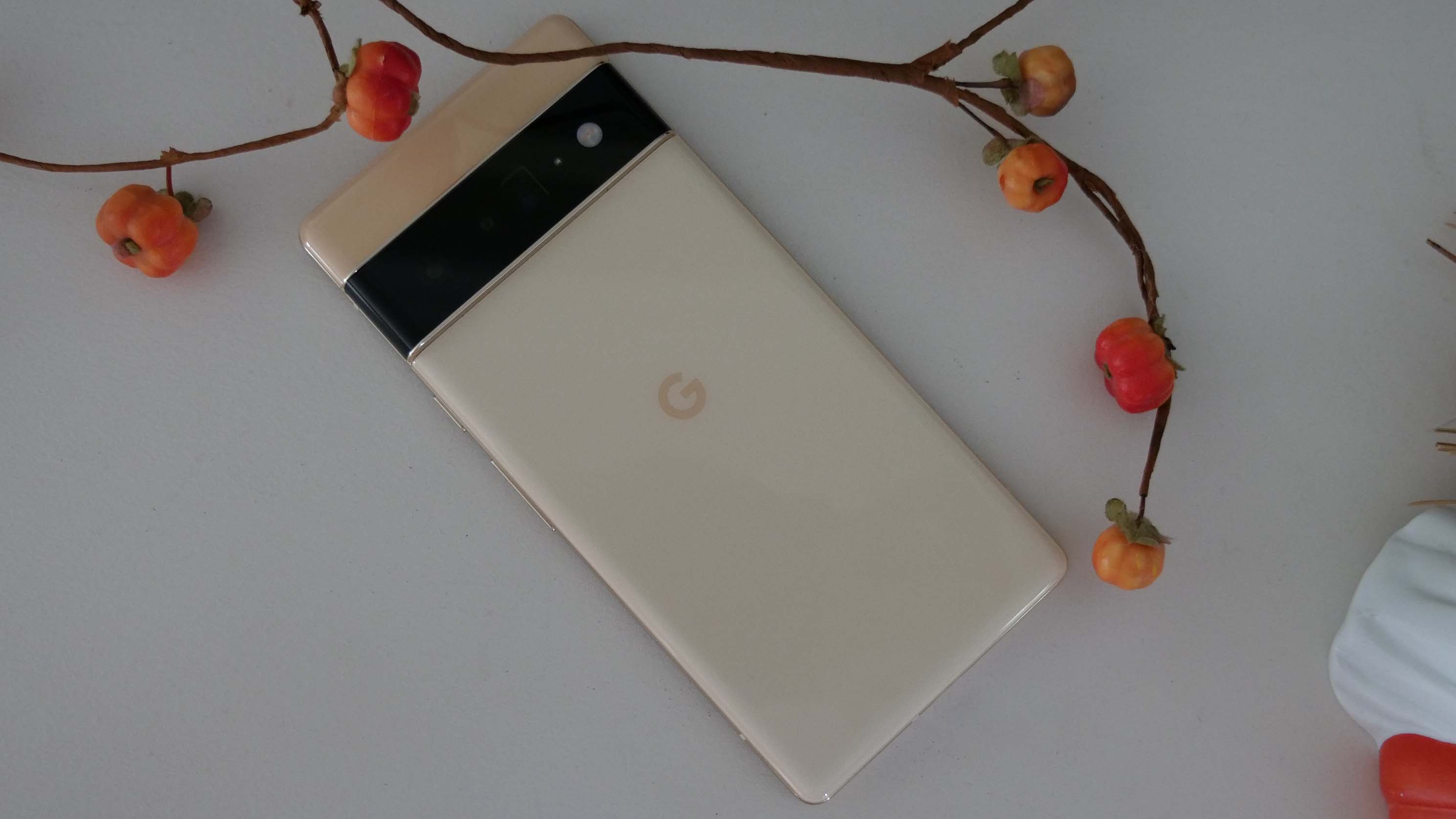
Overall winner: Pixel 6 Pro
The Pixel 6 Pro is the better smartphone for most people this year. As you saw, there are many areas where these phones are virtually indistinguishable from one another. Still, the more affordable pricing, superior software, and support, along with the stellar photos put the Pixel 6 Pro over the top.
The Galaxy S21 Ultra retains a few distinct advantages over the Pixel 6 Pro with power-user features like DeX, its unique S Pen support, unmatched telephoto reach, and superior battery life. And while the scales ultimately tip in favor of the Pixel 6 Pro, it’s a reasonably narrow victory that a few different priorities can tip the other way.
These are the two best flagship Android phones available today, and you aren’t making a mistake with either one. The Pixel 6 Pro is the better option for most people as the advantages of the Galaxy S21 Ultra are, for the most part, more niche needs than the broader advantages of the Pixel 6 Pro.
Sean Riley has been covering tech professionally for over a decade now. Most of that time was as a freelancer covering varied topics including phones, wearables, tablets, smart home devices, laptops, AR, VR, mobile payments, fintech, and more. Sean is the resident mobile expert at Laptop Mag, specializing in phones and wearables, you'll find plenty of news, reviews, how-to, and opinion pieces on these subjects from him here. But Laptop Mag has also proven a perfect fit for that broad range of interests with reviews and news on the latest laptops, VR games, and computer accessories along with coverage on everything from NFTs to cybersecurity and more.

